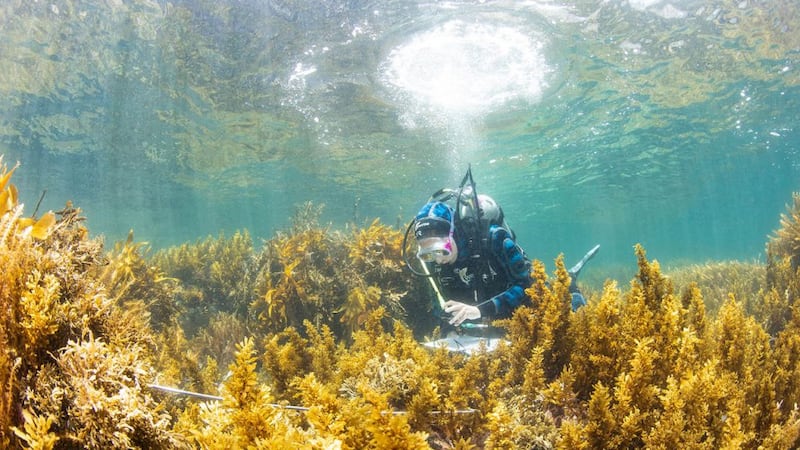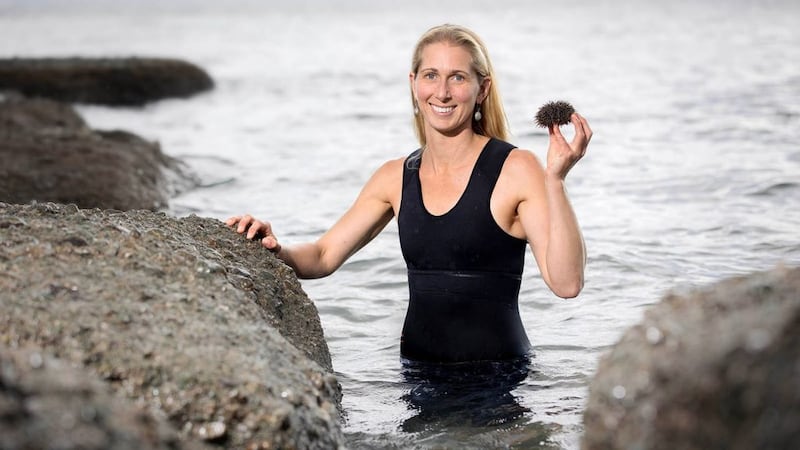New research from the University of Auckland is helping iwi handle invasive kina barrens, which is allowing kelp and seaweed forests to thrive again.
Marine scientist Dr Kelsey Miller said the overfishing of the sea urchin’s natural predators has caused a disruption of the ecosystem with kina becoming overpopulated and eating up all the rimurimu, causing the barrens.
“The research that we have been doing, there’s a lot of interest in trying to understand how we can restore kelp forest because we need that productivity.
“If we have a healthy ecosystem with lots of the creatures that eat kina, so particularly kōura, the crayfish, or tāmure snapper, those ones love to eat kina.
“We have a healthy ecosystem, the kina populations are normal and low and good but there’s a lot of interest in understanding how we can speed that up,” Miller told Te Ao Māori News.
One of the goals for the research is to help iwi, policymakers, fisheries, and local communities deal with the barrens.
She got support from Ngāti Manuhiri and Ngāi Tai ki Tāmaki while doing her research.

Ngāi Tai ki Tāmaki Umupuia Marae kaitiaki Laurie Beamish agreed with Miller’s statements about predators.
“In these modern times, we face a lot of challenges with just the changes in climate, the mauri of our moana and the disappearance of taonga like our rimurimu, which is attributed to an overpopulation of kina.
“This comes about from our point of view to an unbalanced harvesting of the taonga of our moana. So there’s been a lot of focus by recreational commercial aspects around our kōura and of course the big kōura were the first to go, they’re the natural predators for our kina.”
Part of the reason Ngāi Tai ki Tāmaki joined the project was to safeguard kai for future generations.
“We really mourn the loss of our kaimoana in our local areas and we’ve taking steps as Ngai Tai te Tamaki to actually grow our kai back.
“We’re taking proactive efforts to work with all institutions and people such as Dr Miller to understand from western science perspective, along with our mātauranga Māori, to apply every lever we can understand and bring to bear on enhancing the mauri, thereby giving our future generations a chance to enjoy the same kai that we have as an older generation,” Beamish said.

Most of the research was conducted in the Hauraki Gulf with Miller and her team diving to remove a kina barren; this took 450 hours. They then spent another 450 hours monitoring the area where they saw the underwater forest grow back.
Miller emphasised that kina were still good for the ecosystem, as without them or their predators, the ecosystem wasn’t healthy.
“There’s a lot of publicity around kina barrens and how environmentally bad they are and so our work is trying to kind of change the narrative and to remember to put kina in as they are a very important part of our ecosystem, even if the kina barons are problematic.
“Kina removal is very effective in allowing kelp to regrow. It doesn’t bring back a healthy ecosystem so, without having those predators, it won’t be enough of a fix. So I guess my hope is that the lessons that we have from the past five years can be useful for hapū or community groups in understanding whether kina removal is a tool that would be useful for them.
Miller is hoping to create a guidebook with her findings to help iwi, policymakers, fisheries, and local.


